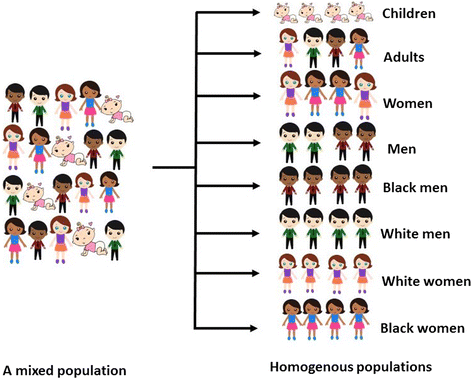Considerations and guidance in designing equity-relevant clinical trials
- PMID: 28583125
- PMCID: PMC5460332
- DOI: 10.1186/s12939-017-0591-1
Considerations and guidance in designing equity-relevant clinical trials
Abstract
Health research has documented disparities in health and health outcomes within and between populations. When these disparities are unfair and avoidable they may be referred to as health inequities. Few trials attend to factors related to health inequities, and there is limited understanding about how to build consideration of health inequities into trials. Due consideration of health inequities is important to inform the design, conduct and reporting of trials so that research can build evidence to more effectively address health inequities and importantly, ensure that inequities are not aggravated. In this paper, we discuss approaches to integrating health equity-considerations in randomized trials by using the PROGRESS Plus framework (Place of residence, Race/ethnicity/culture/language, Occupation, Gender, Religion, Education, Socio-economic status, Social capital and "Plus" that includes other context specific factors) and cover: (i) formulation of research questions, (ii) two specific scenarios relevant to trials about health equity and (iii) describe how the PROGRESS Plus characteristics may influence trial design, conduct and analyses. This guidance is intended to support trialists designing equity-relevant trials and lead to better design, conduct, analyses and reporting, by addressing two main issues: how to avoid aggravating inequity among research participants and how to produce information that is useful to decision-makers who are concerned with health inequities.
Keywords: Design; Education; Ethnicity; Gender; Health equity; PROGRESS plus; Randomized trial; Religion; Socio-economic.
Figures
References
-
- O’Neill J, Tabish H, Welch V, Petticrew M, Pottie K, Clarke M, Evans T, Pardo Pardo J, Waters E, White H, et al. Applying an equity lens to interventions: using PROGRESS ensures consideration of socially stratifying factors to illuminate inequities in health. J Clin Epidemiol. 2014;67(1):56–64. doi: 10.1016/j.jclinepi.2013.08.005. - DOI - PubMed
MeSH terms
LinkOut - more resources
Full Text Sources
Other Literature Sources
Medical


